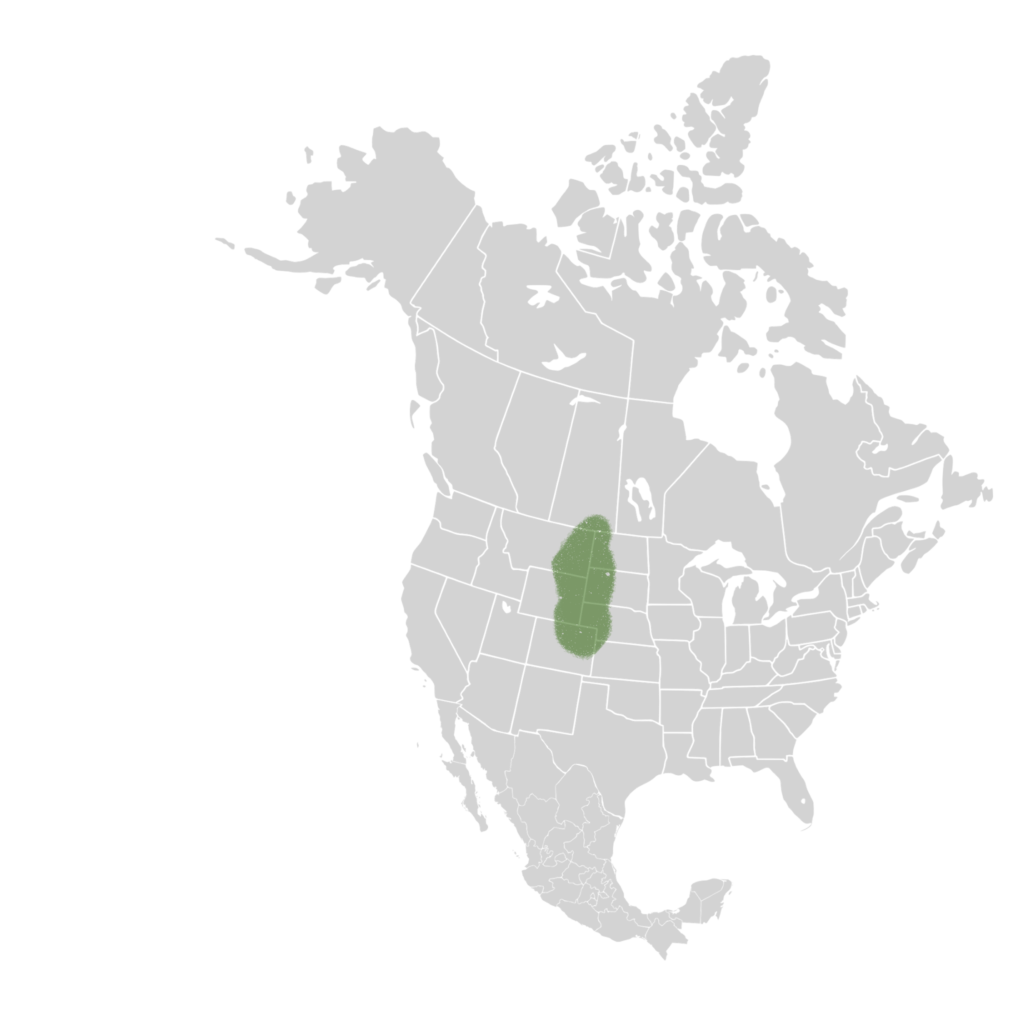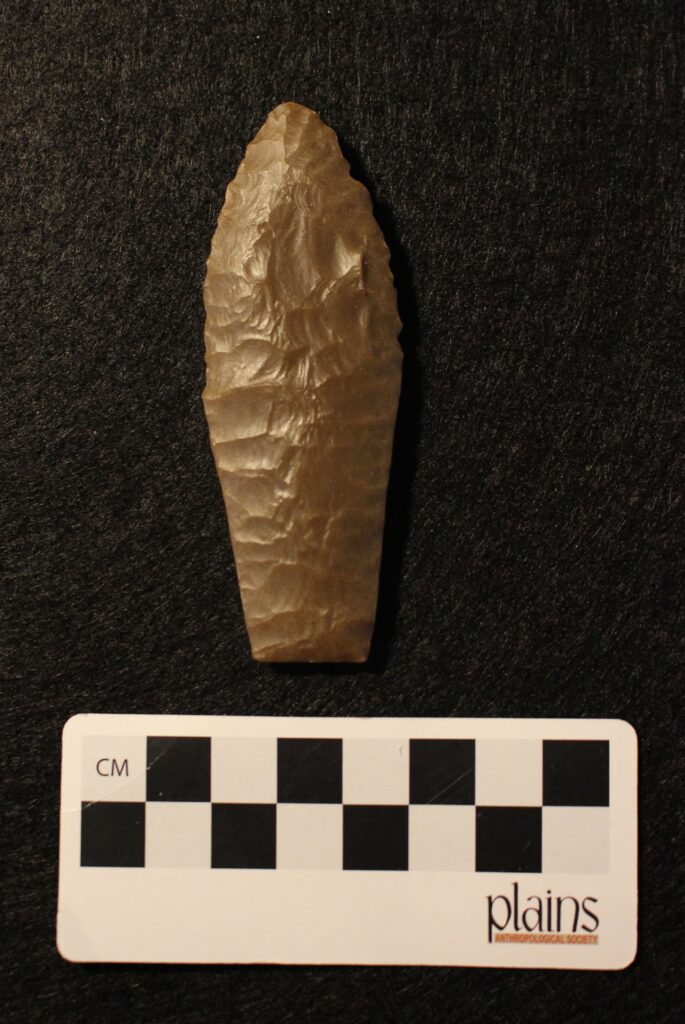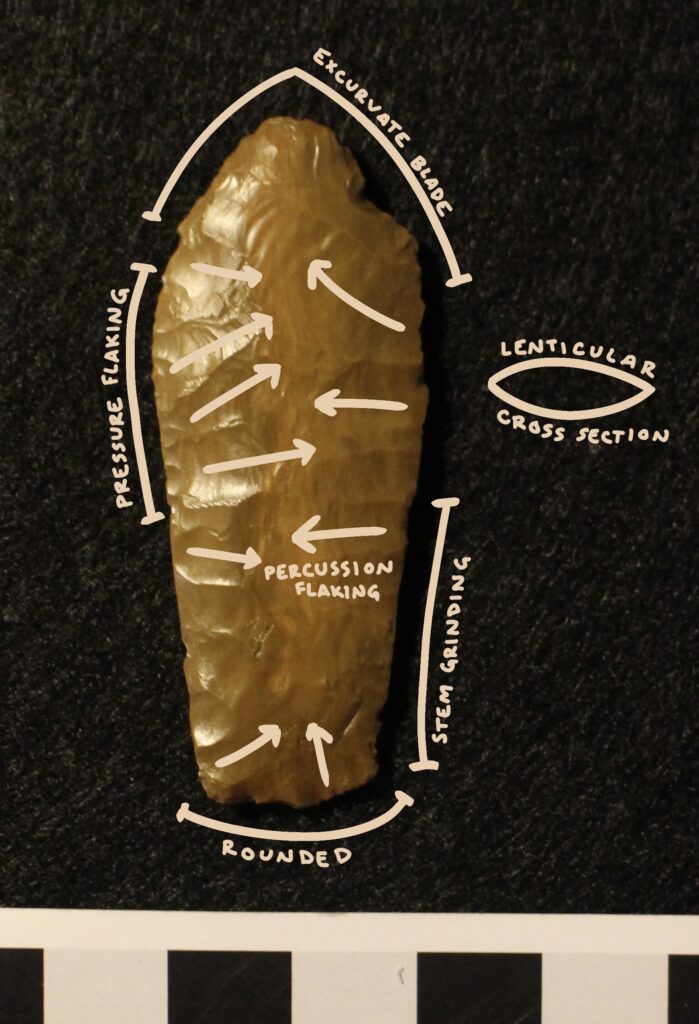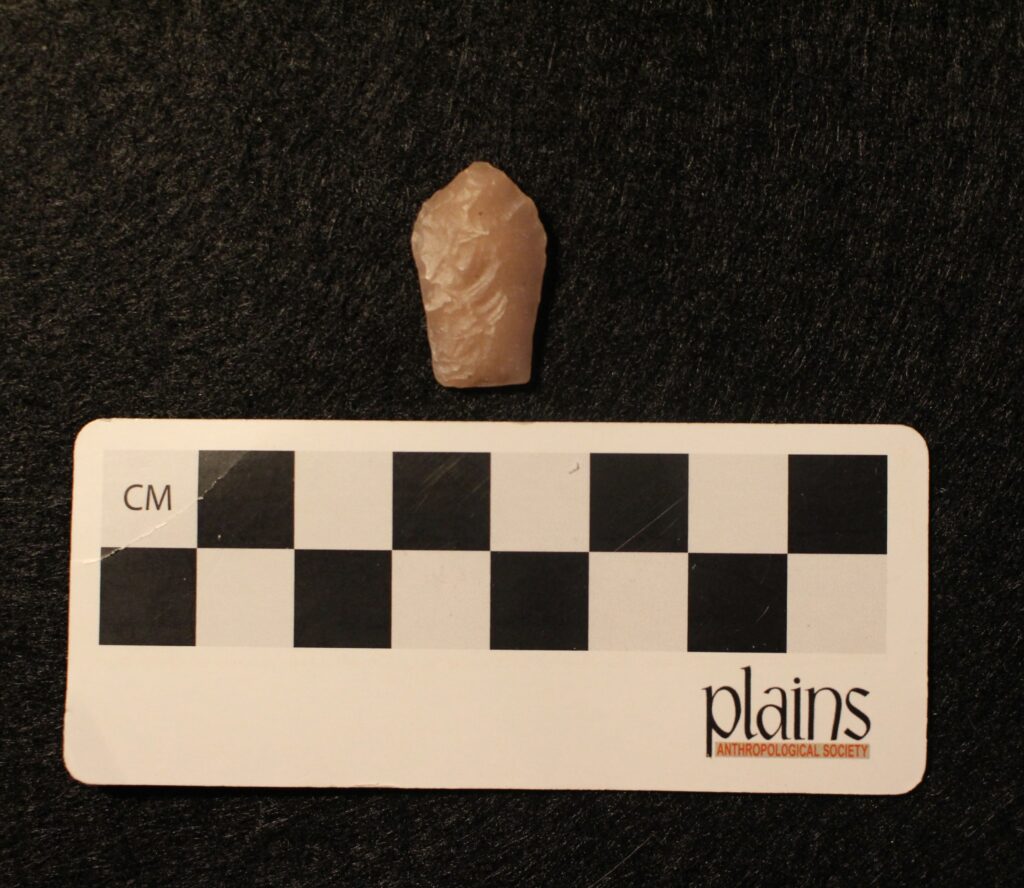Hell Gap
10,400 - 9,500 BP ; [PLANO]
Hell Gap points closely follow Agate Basin chronologically. They likely overlapped for a time, and may have existed together. This can be theorized using the Agate Basin level, at the Agate Basin site. Hell Gap points were found alongside Agate Basin here, showing possible coexistence.
Both these point types fall under the term Plano, which used to be a more common term for lanceolate unfluted points which came after Clovis and Folsom. Today, Plano refers to “late Paleoindian” ranging from 10,200-8,000 RCYBP.¹
A common theme among these ancient cultural complexes is our limited understanding of their lifeways, due to the archaeological record. The Jones Miller site in Colorado is unique, because we can make assumptions about it using the ethnographic record.
At the site, a posthole is present along with a flute, a miniature Hell Gap point, and a butchered dog. These items are thought to have been shamanic and are reminiscent of the hunting practices of the much later Assiniboine and Cree. These groups would place offerings on the pole of where a hunt would take place. The Jones Miller site also had a distinctive lack of skulls on the bison remains. These could have been removed to later be used in other ceremonies.²
If the Jones Miller site was used in the same ways that the Assiniboine and Cree hunted, it shows a longstanding tradition that dates back thousands of years. I would suggest that it would be worthwhile to look at other ethnographic traditions and compare them to Paleo sites in order to gain a greater insight into these distant people.
Hell Gap Points
Unlike Agate Basin points, Hell Gap points are commonly much more crudely made. The flaking is irregular, with a mixture of percussion and pressure flaking throughout the points surface. They look stylistically similar, with Hell Gap points exhibiting more pronounced shoulders. The stem is long and ground on all sides. Hell Gap points likely did not penetrate as deeply as Agate Basin points, but due to their shoulder cut a larger hole.
Typology
- Form
- Base
- Horizontal Cross Section
- Vertical Cross Section
- Reduction
- Stem Grinding
- Basal Grinding
- Lanceolate
- Rounded (common), Straight (rare)
- Lenticular
- Irregular, uniform
- Pressure and percussion
- Yes, always
- Yes
Distribution map (great Plains)

Notable Sites
- Jones Miller, Colorado – A bison kill site that was used in multiple winters. The animals would be led into an entrapped area, surrounded by hills where they were slaughtered. There is also evidence of ceremonial use.
- Casper, Wyoming – Bison kill site, where the animals were driven into a sand dune to be slowed, and then slaughtered. Numbers range to around 100 bison, who’s teeth show possible indications of stress – perhaps from a worsening environment, inbreeding, or human predation.
- Agate Basin, Wyoming – Likely continuation of Agate Basin procurement at the site. The kill happened in December to 11 bison young.
References cited
Typology:
Taylor, Jeb. Projectile Points of the High Plains: New Perspectives on Typology Based on Examinations of Original Type Site Specimens. 1st ed. Buffalo, Wyo.: Jeb Taylor Artifacts, 2006.
¹Wood, W. Raymond, ed. Archaeology on the Great Plains. Lawrence: Univ. Press of Kansas, 1998.
²Cassells, E. Steve. The Archaeology of Colorado. Rev. ed. Boulder, Colo: Johnson Books, 1997.
³Kornfeld, Marcel, George C. Frison, Mary Lou Larson, Bruce A. Bradley, and George C. Frison. Prehistoric Hunter-Gatherers of the High Plains and Rockies. 3rd ed. Walnut Creek, Calif: Left Coast Press, 2010.
4Taylor, Jeb. Projectile Points of the High Plains: New Perspectives on Typology Based on Examinations of Original Type Site Specimens. 1st ed. Buffalo, Wyo.: Jeb Taylor Artifacts, 2006.



